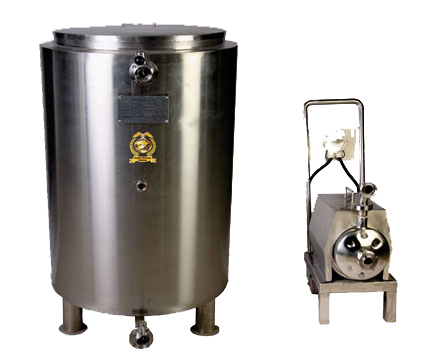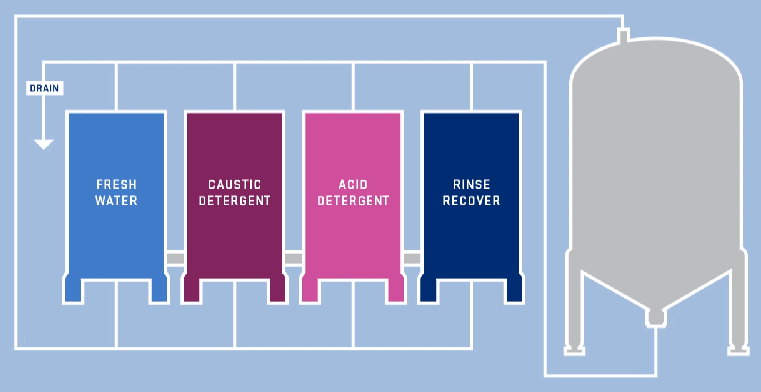THE BASICS OF CLEAN-IN-PLACE IN A BREWERY
Clean-in-place is the process of cleaning equipment without disassembly or having to transport it to a different location. It comes with several benefits over the traditional manual cleaning.
ADVANTAGES OF CIP
- Clean-in-place has become the industry standard method for cleaning because it eliminates a majority of the human error element, saves you money on chemicals, and reduces your exposure to harmful chemicals.
- Reduced Human Error: Manual cleaning comes with the risk that you might miss some spots or cross contaminate your scrubbing brush between steps. These mistakes can result in spoiled beer
- Saves Money on Chemicals: With a recovery type CIP system, you have the ability to use a batch of chemicals several times which will save you money in the long run
- Reduced Exposure to Harmful Chemicals: Modern CIP systems are self contained and automated which limit your exposure to harmful cleaning chemicals

HOW CIP WORKS:

Clean-in-place systems use several holding tanks to store their chemical solutions. The chemicals are pumped out of the storage tanks and into the tanks you are cleaning. Typically, a spray ball is used within the tank to coat all the interior surfaces with the chemicals. The chemicals that are used to clean the tank are pumped back out and into the CIP storage tank to be used several more times before being replaced.
CLEANING CYCLE
- Pre Rinse: Water is used to wash away a majority of the soils.
- Caustic Wash: Caustic soda (sodium hydroxide) is used to break down all organic soils and is captured to be used again.
- Rinse: Water is used to rinse the tank and is often recovered.
- Acid Wash: Phosphoric acid is used to remove any beerstone buildup and is capture to be used again.
- Rinse: Water is used to rinse the tank and is then drained
- Sanitization: PAA (Per Acetic Acid) is used to sanitize and disinfect the tank.
